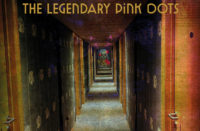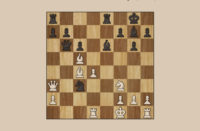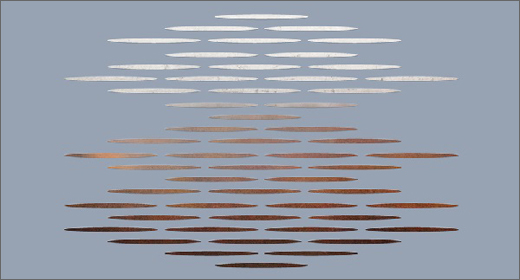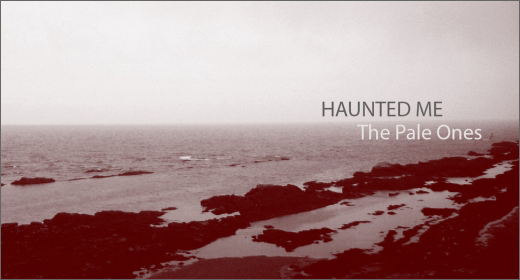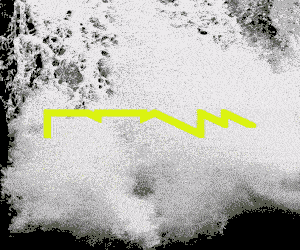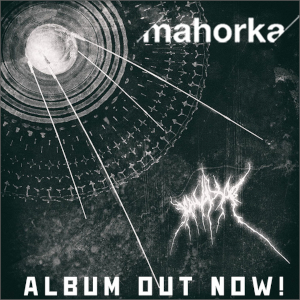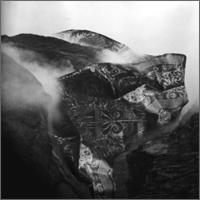 (02.06.06) Deaf Center’s Neon City EP was unquestionably one the finest electronic releases of 2004 and remains, despite some pretty fierce competition, one of the finest entries in the Type label’s catalogue. Topping this release was always going to be a challenge, yet Deaf Center’s Erik Skodvin and Otto Totland seem to have managed it without batting an eyelid. It verges on the embarrassing to resort to the term “cinematic” to describe this release, having bandied it about rather freely recently, but the fact is that Pale Ravine is probably the most cinematic release I have ever written about before. And yet the term grossly oversimplifies Pale Ravine‘s sophistication as much as it understates its impact: each piece is possessed of such overpowering and evocative texture, nuance and depth-of-field its hard to believe that this grand body of work was not composed for a film.
(02.06.06) Deaf Center’s Neon City EP was unquestionably one the finest electronic releases of 2004 and remains, despite some pretty fierce competition, one of the finest entries in the Type label’s catalogue. Topping this release was always going to be a challenge, yet Deaf Center’s Erik Skodvin and Otto Totland seem to have managed it without batting an eyelid. It verges on the embarrassing to resort to the term “cinematic” to describe this release, having bandied it about rather freely recently, but the fact is that Pale Ravine is probably the most cinematic release I have ever written about before. And yet the term grossly oversimplifies Pale Ravine‘s sophistication as much as it understates its impact: each piece is possessed of such overpowering and evocative texture, nuance and depth-of-field its hard to believe that this grand body of work was not composed for a film.
Pale Ravine is something of a departure from Neon City EP, proving that Skodvin and Totland can draw inspiration and absorb influences from diverse sources and produce exquisite work every time. Gone are the various ethnic musical accents that informed Neon City EP, replaced instead by classical strings, delicate piano and vast ambient washes; a letter-boxed panorama of detail and atmosphere at the core of its success.
As you might expect of an album enveloped in artwork as surreal and Lynchian as that displayed in the monochrome photography that adorns Pale Ravine‘s beautiful matte-laminated Type Digipak, the atmosphere often leans toward spectral, foggy darkness. Yet Pale Ravine is less harrowing and ominous than it is enigmatic and tense, by turns weaving vivid images of aged, dark, often overwhelming architectural structures or vast, craggy, mist covered landscapes. Although citing theatre and the theatrical as prime influences – obvious in pieces like “The Clearing” and the albums low-key finale “Eloy” – Pale Ravine‘s sound has far greater universality than this influence might suggest.
The album’s opening movements are strangely reminiscent of another Type release – Logreybeam’s It’s All Just another Aspect of Mannerism – the low, dense murmuring of “Lobby” evoking images of an orchestra tuning their instruments in preparation for a performance that echoes Logreybeam’s “Premonition.” The similarity goes further as the billowing “Thread” majestically emerges, seemingly as a product of the preceding “tuning-up”, accompanied by the distorted, rustling sounds of weaving, rumbling gusts of wind and haunting, arctic strings. “White Lake,” arriving slightly awkwardly with a piano solo that is almost an interruption, stands apart from other pieces here, and its slow waltzing rhythms recall the sumptuous step-printed slow motion shots of Wong Kar-Wai’s masterpiece “In The Mood For Love” in all their beauty, even down to their exquisite use of color, framing and depth of field.
“Path to Lucy” is an exemplar of Pale Ravine‘s style and another obvious highlight. Beautifully mixing the slight with the grandiose, its opening dry strings describe the arrival at the top of a mist-cloaked valley before elegant, swaying strings gently sweep the listener over the edge in a great sweeping arc before fading into the misty clouds of an endless, repeated string and piano motif that breaks the heart. “Weir” is a towering behemoth of deep, resonant drones that literally dwarf the listener, and from the long-shot that conjures images of vast dams or abandoned towers standing silently amidst deserted landscapes, the viewpoint gradually zooms in to the interior, becoming shrouded in detuned radio feedback and the repeating chatter of some unidentified mechanical device.
“Loft” is a tense and claustrophobic chiller, an exploration of the recesses of a dark, cluttered attic as creepy piano strings are heard zithering in the far distance. “Thunder Night” lightens the mood as twinkling, structured wind-chime loops sparkle above more orchestral bursts and vibrato strings. “Lamp Mien” vividly introduces elements of Japanese percussion: its tranquil, up-turned gestures and rose-colored accents a perfect alternative to Air’s fragrant composition that accompanies Charlotte’s exploration of the Heian shrine and Nanzenji temple in “Lost In Translation.” The frustratingly fleeting and effortlessly stylish “The Clearing” presents a soft field recording that reveals the twitter of birds and buzzing of insects that add color to an otherwise almost sinister 30’s period string and clunking piano arrangement that unexpectedly sidesteps into a maudlin, resigned waltz at its close.
Pale Ravine is one of the most sublimely balanced and subtle works yet released by Type: though quite astonishingly visual its canvas remains just abstract enough to stir the imagination, eliciting strong personal connections, involvement and investment that becomes an almost interactive experience. A triumphant return for Deaf Center, Pale Ravine is one of the most intelligently and affectionately composed releases of 2005.
Pale Ravine is out now on Type.







